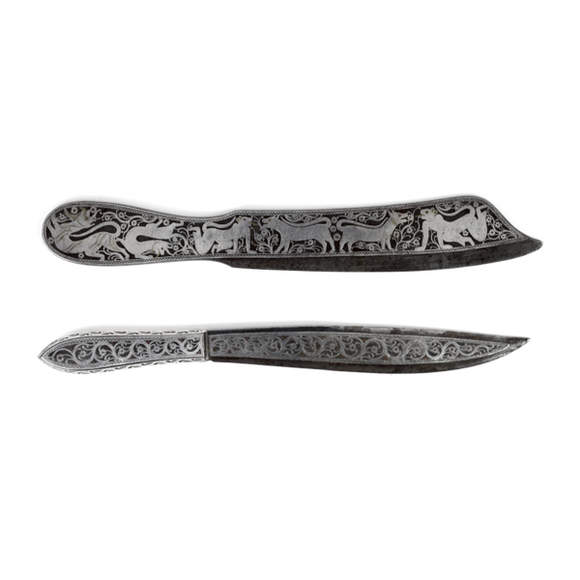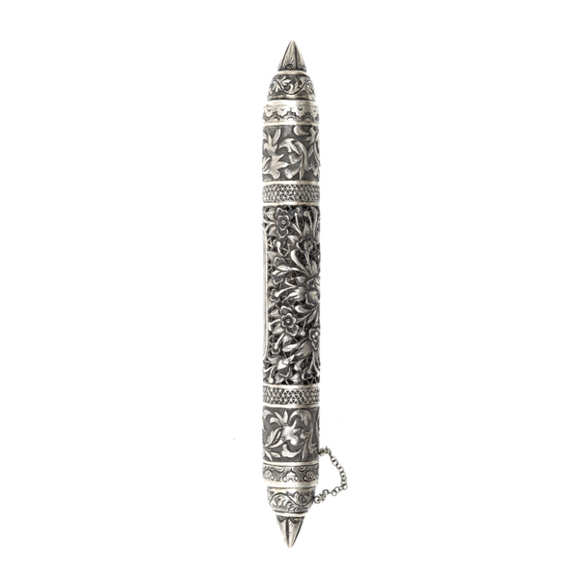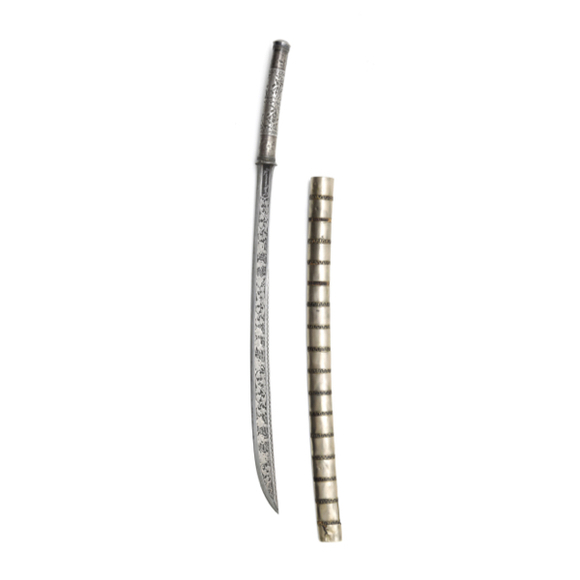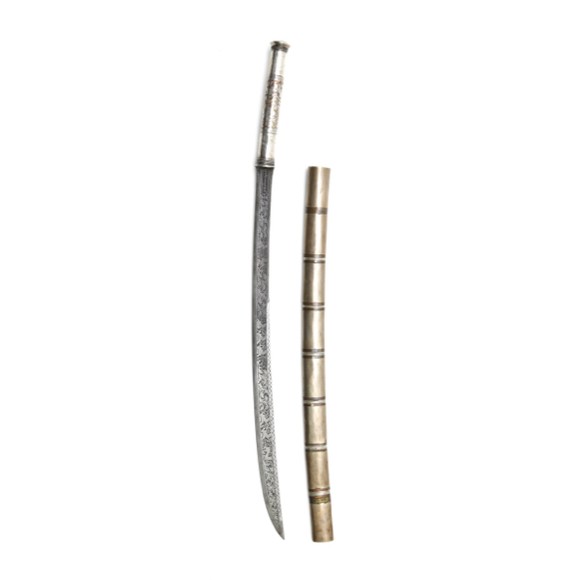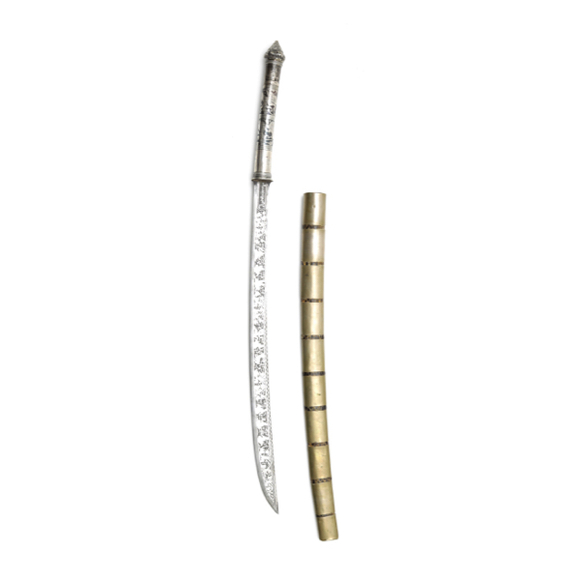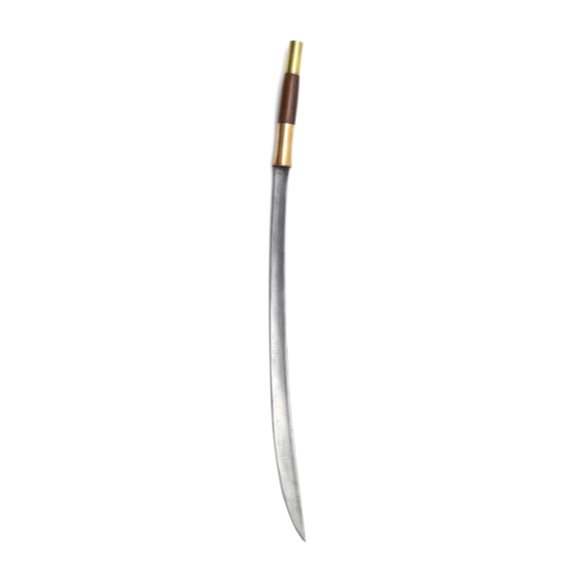Very rare set of Burmese knives from Mindan village.

66.5 cm
378 grams
Silver, brass soldering
Rangoon (Yangon)
Burma (Myanmar)
1920s-1930s
American antique art market
Burmese silversmithing
Burmese silverwork reached a height from the late 19th to early 20th century. The introduction of steel tools by the British -replacing brass ones- made finer work possible, and the organization of annual competitions between silver workers pushed the level upwards during the period of British rule in Burma, which lasted from 1824 to 1948.1
Elaborate dha scabbards first appeared in Rangoon, and many were commissioned by the British Raj in order to bestow them on local dignitaries.2
Notes
1. H.L. Tilly; The Silverwork of Burma. Rangoon, Superintendent Government Printing. 1902.
2. Robert Hales; Islamic and Oriental Arms and Armour: A Lifetime's Passion. Robert Hales, C.I. Ltd. 2013. Page 200.
This example
A Burmese dha scabbard casing of the finest quality. It is made of seven tubular segments that were joined together. Each segment has a cartouche on each side, most hold a figure on either side except for the bottom segment, which has a temple on either side.
Another exception is the second segment from the top which has an inscription on the left side:

"Maung E"
The same words are repeated in Burmese script under it. Maung E is probably the name of a person to whom the sword was presented.
Figures
The figures depicted on the scabbard appear to be from the Hindu pantheon.

From top to bottom we see:
1. Two Nandi, the bull vahana ("vehicle animal") of the Hindu god Shiva.
2. A warrior with a shield and sword, probably Vishnu.
3. Two warriors with a snake and a scythe or dagger, probably Shiva.
4. Two unknown figures.
5. Two Narasimha humanoid figures with lion heads, avatar of Vishnu.
6. Two unknown figures. Possibly Rama and Sita.
Comparable examples
This kind of work, executed in this quality, is extremely rare and I have not been able to find comparable qualiy in museum collections. I have been fortunate to have handled two such pieces before that I found on the open market, now in private collections.
The first one I bought and sold in 2016, unfortunately, my photography skills weren't as they are today. The quality of the scabbard was very good, but the blade was not. The blade commemorates a Burmese general who fought the British fiercely, and so it is unlikely that this piece was commissioned by the British, as many are thought to be.


The second item I acquired in the USA and due to restrictions on ivory export, I left it there and found a local buyer for it. So unfortunately it never made it to my studio. It is closer to the subject of our article both in workmanship and due to the fact it has a cartouche with a name on it, executed in much the same way.


The name is Maung Po Min who was Saohpa (“Lord of the Heavens” or “king”) of Pangmi, one of the Shan states. He ruled from 1934-1959, this dha exhibiting typical 1930s work may have been presented to him at his appointment.
The hilt appears somewhat older, 19th century, and was perhaps an antique when it was used for this dha. The blade, like the former, was not very good, which was common in this period.
Conclusion
A silver Burmese dha scabbard that represents some of the best work done in silver at the time. Very good condition, with some minor dents, including one at the bottom. See photos.
It comes with a custom upright stand.












Fine silver overlaid dha made in Mindan village, south of Mandalay, gained fame in the 19th…

